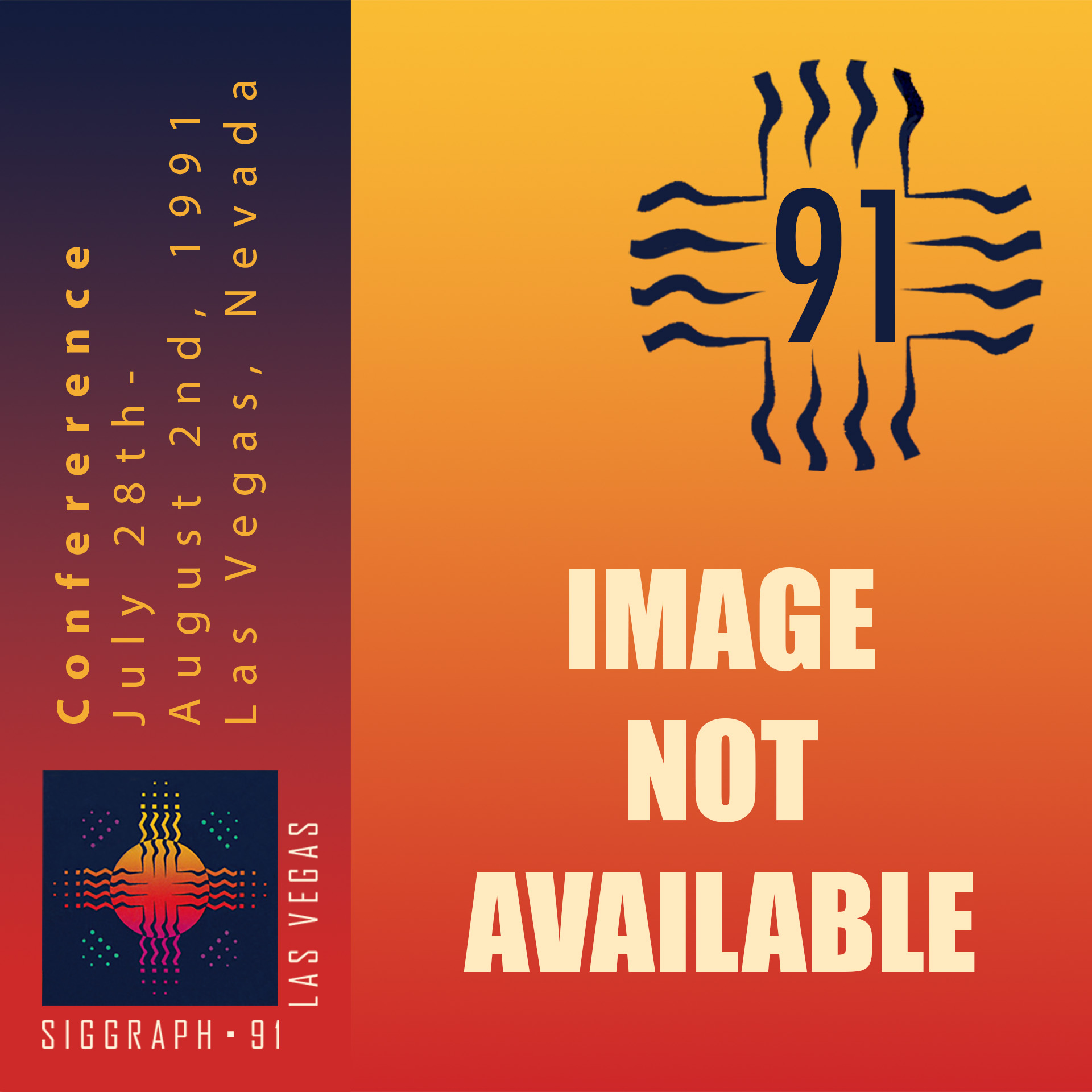“Treasures of the Smithsonian” by Hoekema
Conference:
- SIGGRAPH 1991
-
More from SIGGRAPH 1991:


Type(s):
E-Tech Type(s):
- Hypermedia / Hypertext
- Edwards Park
- Mike Nibley
- Amy Hough
- Mark Phinney
- Juliana Montfort
- Jon Singer
- Michael Gallelli
- Lee Moyer
- Shoshonah Dubiner
- Ray Ashton
Title:
- Treasures of the Smithsonian
Program Title:
- Demonstrations and Displays
Presenter(s):
Collaborator(s):
Project Affiliation:
- Hoekema Interactive
Description:
Treasures of the Smithsonian was designed as a home-entertainment product for sale through retail channels. With a CD-I player hooked up to a stereo and television, home viewers can take an armchair tour of the Smithsonian Institution’s 14 museums.
After an appetite-whetting “overture” montage of images with music (the images change each time the disc is loaded), viewers see introductions to the disc and the Smithsonian. Then they move into the “Main Hall” (main menu), a dimly lit chamber with tall columns and some intriguing furnishings, which are actually different pathways into the treasures. A map on the wall allows viewers to select a museum, then see a list of the treasures from that museum (one or all can be selected). A tree trunk leads to a timeline, which arranges all the objects in the program in chronological order. Posters on the wall stand for “tours” of treasures organized thematically. And a file cabinet lets viewers look up treasures by name, by category, or by people associated with them.
Once a treasure is selected, the structure is always the same: An audio commentary by popular Smithsonian Magazine columnist Edwards Park, along with music and sound effects, accompanies a succession of 2-6 high-quality photographic images (encoded in DYUV format) of the object and people or things associated with it.
While a treasure presentation is running, viewers can pause and resume it, skip it, restart it, or call up a text field with notes giving all the details about the object: who, what, when, where, as well as dimensions, materials, photo credits, and a sentence or two of more detailed information than might be covered in the “short and sweet” audio narration.
Viewers with short attention spans can “bail out” of any treasure by selecting “Links.” A list of theme words or ideas is displayed. When one is selected, the viewer sees a new menu listing other treasures with the same “key word.” This provides a sort of “back door” navigational scheme to complement the main menu structure. It takes about two hours to play all the presentations in a row. Adding time for reading the notes and playing with the “toys” brings the total interaction time to over three hours.
Art Direction
Because a great diversity of images of real objects dominates the program, the task of art direction was to provide a visual character that evokes the personality of the Smithsonian Institution while allowing the objects to stand by themselves.
The principal areas requiring graphic treatment were the menu structure and the buttons, labels, and subsidiary menus of the treasure presentation format. After considering other options, including computer graphics, the development team decided to build a model for the main menu. As completed, the main choices of the program appear as objects in a darkened room. The room is large, with high ceilings and some columns; the walls are of rough-textured stone, but the floor is polished. It could easily be a room somewhere in the Smithsonian, whose buildings run more to brick than to marble. This image, with its easy balance between grandeur and modesty, seems appropriate for an institution often affectionately called “the nation’s attic.” The visual theme of textured masonry, in shades of taupe, brown, and gray, recurs throughout the program: on the control but-tons, on the ledge at the bottom of the screen giving the name of the current treasure, and on most sub-menus.
Production
The model for the “Main Hall” was built on a 1/12 scale, shot in 16mm film, transferred by telecine to videotape, and digitized into CD-I format. In the final program, moving the cursor to one of the “objects” representing a menu choice was supposed to highlight the object. The model was shot with lock-down views in normal lighting and with each menu “object” lit by a naturalistic spot-light.
Once the images were stored on disk, however, the effect was rather too subtle: if you turned away at the wrong moment, you could easily miss the change. The solution was to “let the machine be a machine,” and add more conspicuous highlighting controlled by the computer. Programmers brought down the luminance in the normal picture, so that the highlight would not be washed out. Now, when you move the cursor over an object, a rectangle of brighter light turns on, with clear edges and an obvious difference. In this case, the need for clarity required throwing out the expensive, subtly naturalistic effect in favor of a crude, mechanical, but more effective shortcut!
Treasures of the Smithsonian is a co-publication of the Smithsonian Institution and American Interactive Media, Inc., a subsidiary of N.V. Philips. In May 1991, Treasures of the Smithsonian received a first-place Muse Award from the American Association of Museums
Other Information:
Hardware and Software: CD-I




